If you’re a cat owner, you know that keeping your furry friend safe is a top priority. That’s why it’s essential to be aware of which plants are safe to have around your feline companion. In this article, we’ll explore the world of zinnias and their suitability for cats. Whether you’re a seasoned gardener or a novice, you’ll learn everything you need to know to keep your cat happy and your garden flourishing. Let’s discover why zinnias are a fantastic choice for your feline-friendly household.
Benefits of Zinnias for Cats
Zinnias not only add beauty to your garden, but they also offer several benefits for your feline friends. Here are some of the key advantages that zinnias can provide for your cats.
Source of Essential Nutrients
Zinnias are rich in essential nutrients that can support your cat’s overall health. They contain vitamins A, C, and E, which are essential for maintaining healthy eyesight, boosting the immune system, and promoting healthy skin and fur. Additionally, zinnias are a good source of minerals such as potassium and calcium, which are important for maintaining strong bones and muscles in cats.
Promotes Hydration
Cats can be notoriously picky about drinking water, leading to potential issues with dehydration. Zinnias can help address this problem, as they contain a significant amount of water. By incorporating zinnias into your cat’s environment, you can encourage them to naturally hydrate themselves by nibbling on the leaves and stems of these beautiful flowers.
Supports Digestive Health
Zinnias are known for their digestive-stimulating properties. The fibers present in zinnias can aid in promoting proper digestion in cats and may help alleviate some common gastrointestinal issues. By adding zinnias to your cat’s diet or allowing them access to the plants in a controlled manner, you can help support their digestive health naturally.
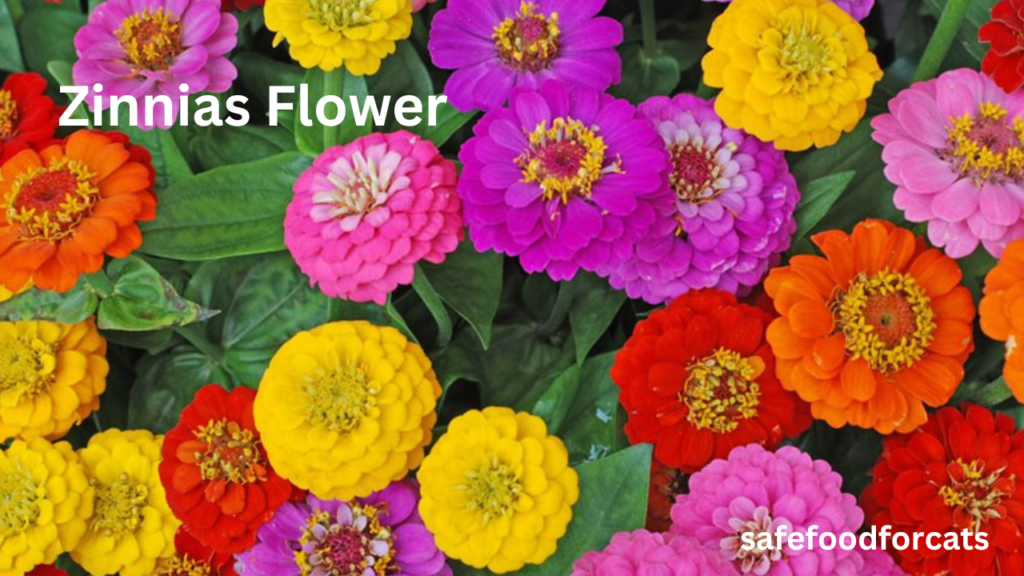
Types of Zinnias Safe for Cats
When choosing zinnias for your cat-friendly garden, it’s essential to select varieties that are non-toxic and safe for your feline companions. Here are three zinnia varieties that you can confidently cultivate without worrying about any harmful effects on your cats.
Common Zinnia (Zinnia elegans)
The common zinnia is a classic choice that adds vibrant color to any garden. With its large, daisy-like flowers, this variety is not only safe for cats but also attracts butterflies and other pollinators. The common zinnia comes in a wide range of colors, allowing you to create a visually stunning garden that both you and your furry friends can enjoy.
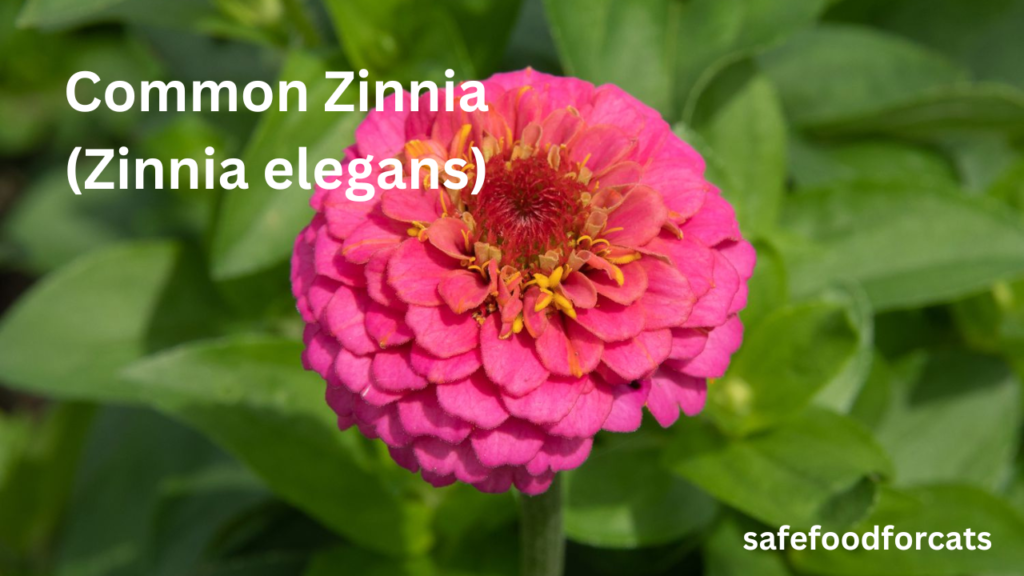
Zahara Series Zinnias (Zinnia marylandica)
The Zahara series zinnias are a relatively new addition to the zinnia family, known for their disease tolerance and compact growth habit. These zinnias produce radiant blooms in various shades, including cherry, yellow, and white. With their vibrant colors and sturdy stems, the Zahara series zinnias make a beautiful addition to any garden while ensuring the safety of your feline companions.
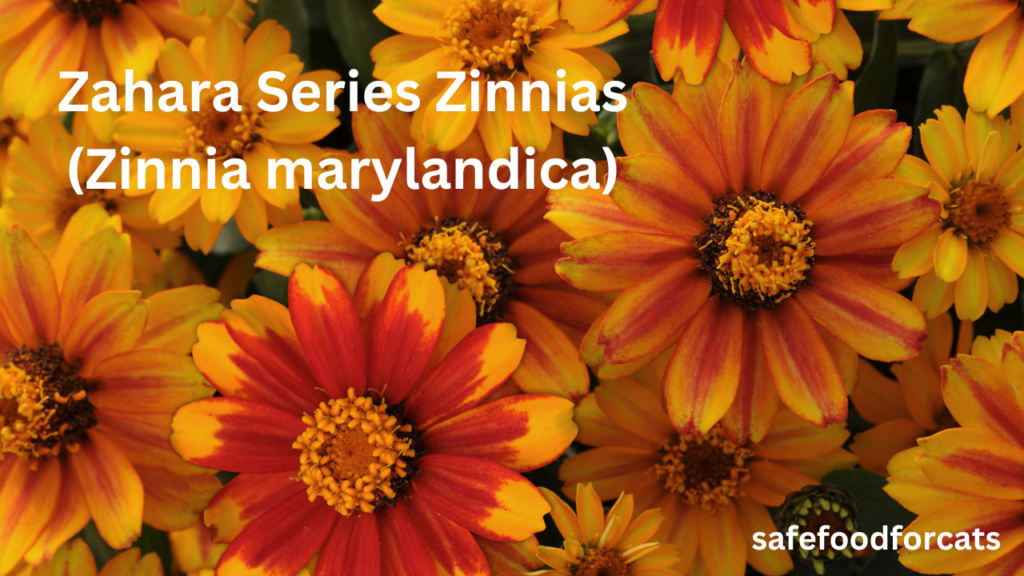
Profusion Series Zinnias (Zinnia hybrida)
The Profusion series zinnias offer an abundance of colorful flowers throughout the growing season. These compact plants produce flowers in shades of red, orange, pink, and white, providing a stunning display for both you and your cats to enjoy. As an added bonus, the Profusion series zinnias are highly resistant to powdery mildew, ensuring that your garden stays healthy and vibrant.
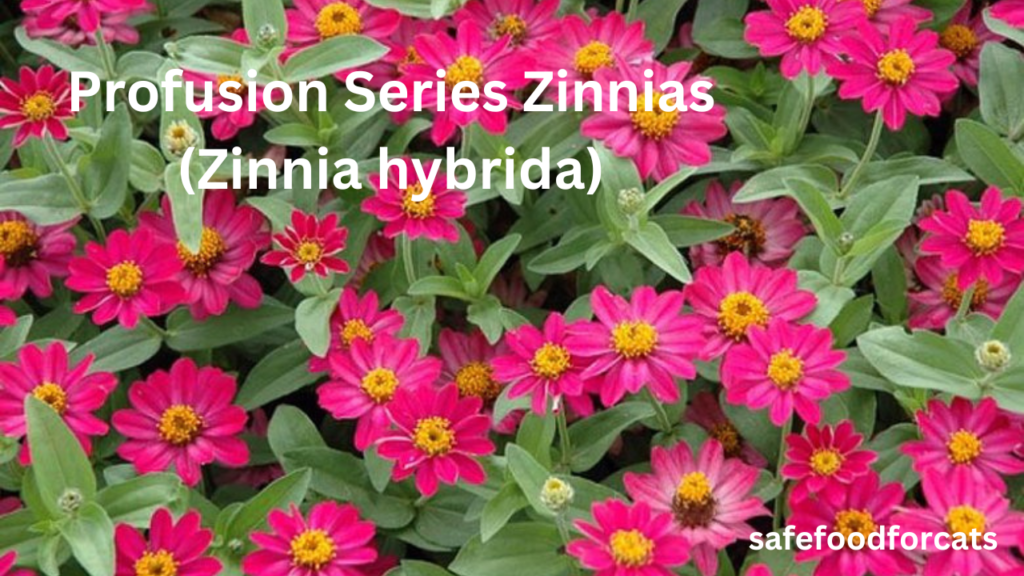
Tips for Growing Zinnias for Cat Safety
To ensure the safety of your cats while enjoying the beauty of zinnias in your garden, it’s important to follow these tips.
Choose Non-Toxic Varieties
As mentioned earlier, always choose zinnia varieties that are non-toxic to cats. Avoid any zinnia species that may have been chemically treated or could potentially cause harm if ingested. By selecting non-toxic zinnias, you can enjoy the peace of mind that comes with providing a safe environment for your furry friends.
Avoid Harsh Chemicals
When caring for your zinnias, it’s crucial to avoid using harsh chemicals, such as pesticides or herbicides, that could be toxic to your cats. Instead, opt for organic or natural alternatives to maintain the health of your plants without putting your feline companions at risk. Consider using natural pest control methods like companion planting or attracting beneficial insects to your garden.
Create a Safe Outdoor Environment
To prevent your cats from coming into contact with zinnias in a way that might be harmful, create a safe outdoor environment for them. Install barriers or fencing around your zinnia beds to restrict your cats’ access to the plants. You can also create designated play areas for your cats away from the zinnias to minimize the chances of accidental ingestion or contact with the plants.
Managing Cat-Zinnia Interactions
While taking precautions is important, it’s also essential to manage your cat’s interactions with zinnias to ensure their safety. Here are some effective ways to do so.
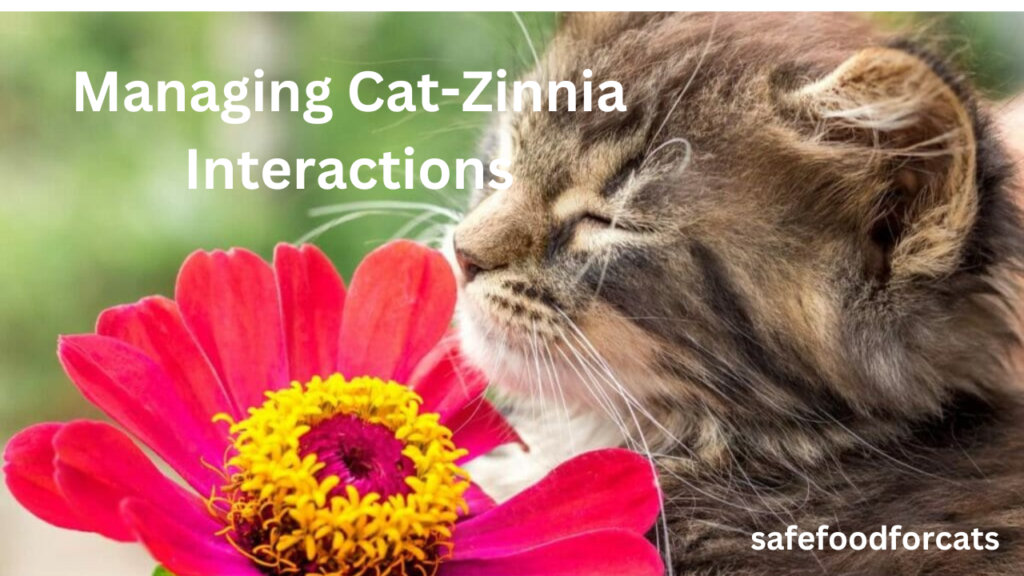
Supervising Indoor Cats
If you have indoor cats, it’s relatively easier to control their interaction with zinnias. Place zinnias in areas of your home that are inaccessible to your cats, such as high shelves or hanging baskets. By supervising and redirecting your cat’s attention to other safe and engaging activities, you can prevent them from nibbling on the zinnias or accidentally knocking them over.
Creating Barriers in the Garden
In your outdoor garden, you can create physical barriers to keep your cats away from the zinnias. Fencing, netting, or plant cages can be effective in preventing your cats from gaining access to the zinnia beds. Remember to ensure that these barriers are sturdy and escape-proof to keep your cats safe while still allowing them to enjoy the outdoor environment.
Using Deterrents
If your cats are persistent in their attempts to interact with the zinnias, you can use deterrents to discourage them. Cat-friendly deterrents, such as citrus peels or diluted vinegar spray, can be applied near the zinnias to create an unpleasant scent that cats typically dislike. Be mindful of using non-toxic deterrents to ensure the well-being of both your cats and the zinnias.
Potential Risks and Precautions
Although zinnias are generally safe for cats, it’s essential to be aware of potential risks and take necessary precautions to ensure the well-being of your feline companions.
Ingestion of Toxic Parts
While zinnia flowers are non-toxic, the stems and leaves can cause gastrointestinal discomfort if ingested in large quantities. It’s important to monitor your cats’ interaction with the zinnias and discourage them from excessively nibbling on the plants. If you notice any signs of discomfort or gastrointestinal issues, consult your veterinarian immediately.
Allergic Reactions
Some cats may have allergies or sensitivities to zinnias, just like humans do. Symptoms of allergic reactions in cats can include sneezing, coughing, excessive scratching, or watery eyes. If you observe any of these symptoms after introducing zinnias to your cat’s environment, it’s best to remove the plants and consult with a veterinarian to determine the cause and appropriate treatment.
Contact Dermatitis
Zinnias, like many other plants, can cause contact dermatitis in cats. If your cat comes into direct contact with zinnias, it may experience skin irritation or a rash. Ensure that you monitor your cats closely after introducing them to Zinnias and seek veterinary advice if any symptoms of contact dermatitis appear.
Alternatives to Zinnias for Cat-Friendly Gardens
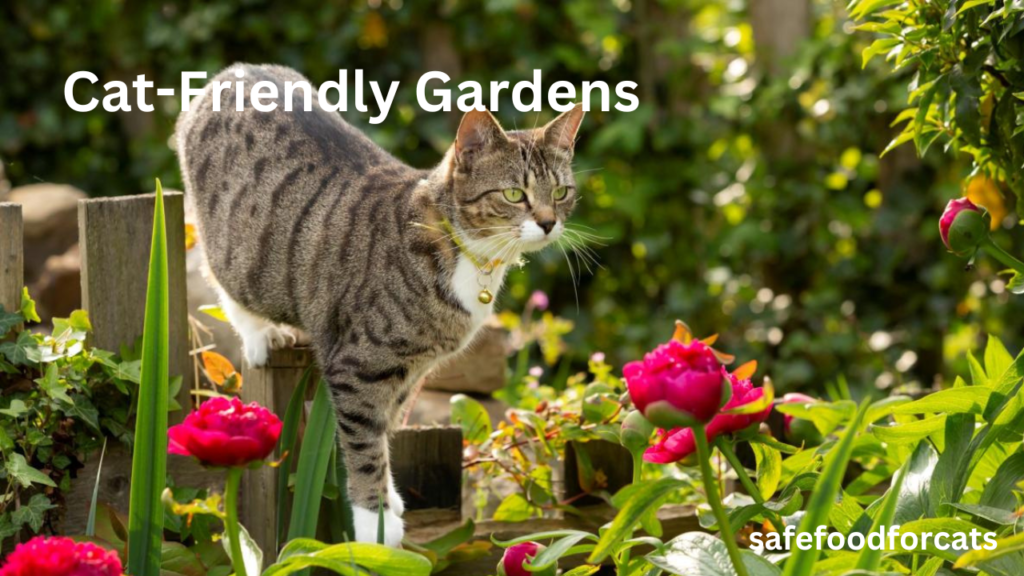
If you’re concerned about potential risks or prefer to explore alternative options, there are several cat-friendly plants that you can consider for your garden. Here are a few popular choices:
Catnip (Nepeta cataria)
Catnip is a well-known favorite among cats. Not only does it provide entertainment and stimulation for your feline friends, but it’s also safe for them to consume. Catnip can be grown in pots or as a ground cover, and its aromatic leaves will surely entice your cats to play and relax.
Valerian (Valeriana officinalis)
Valerian is another plant that has a calming effect on cats. It’s a perennial herb that can be grown in your garden and used in herbal remedies for both humans and cats. Cats are often attracted to the scent of valerian, making it a great addition to your cat-friendly garden.
Silver Vine (Actinidia polygama)
Silvervine is a natural alternative to catnip and has a similar effect on cats. Native to eastern Asia, this plant can be grown in your garden or purchased in the form of toys or sprays that can be used to entertain and stimulate your cats. Silvervine is considered safe for most cats, but as with any plant, it’s essential to monitor your cat’s reaction and engagement with the herb.
Growing Zinnias Indoors for Cat Enjoyment
If you’re concerned about your cat’s outdoor safety or simply want to provide them with a stimulating indoor environment, growing zinnias indoors can be a great option. Here are some tips for growing zinnias indoors to enhance your cat’s enjoyment.
Choosing Safe Locations
When growing zinnias indoors, it’s important to choose safe locations that are out of reach for your curious cats. Consider placing them on high shelves, window sills, or hanging baskets where your cats cannot easily access them. This will help prevent any accidental ingestion or damage to the zinnias.
Providing Proper Care
Indoor zinnias require proper care to thrive and provide visual appeal for both you and your cats. Ensure that they receive adequate sunlight, as zinnias thrive in bright, indirect light. Additionally, regular watering, appropriate potting soil, and occasional fertilizing can help keep your indoor zinnias healthy and vibrant.
Enhancing the Indoor Environment
To maximize your cat’s enjoyment of indoor zinnias, consider creating an enriched environment. Place scratching posts or climbing trees near the zinnias, providing your cats with an outlet for their natural behaviors. Incorporate toys and interactive play areas to keep your cats occupied and mentally stimulated. By creating an engaging environment, you can ensure that your cats are happy and entertained while enjoying the beauty of indoor zinnias.
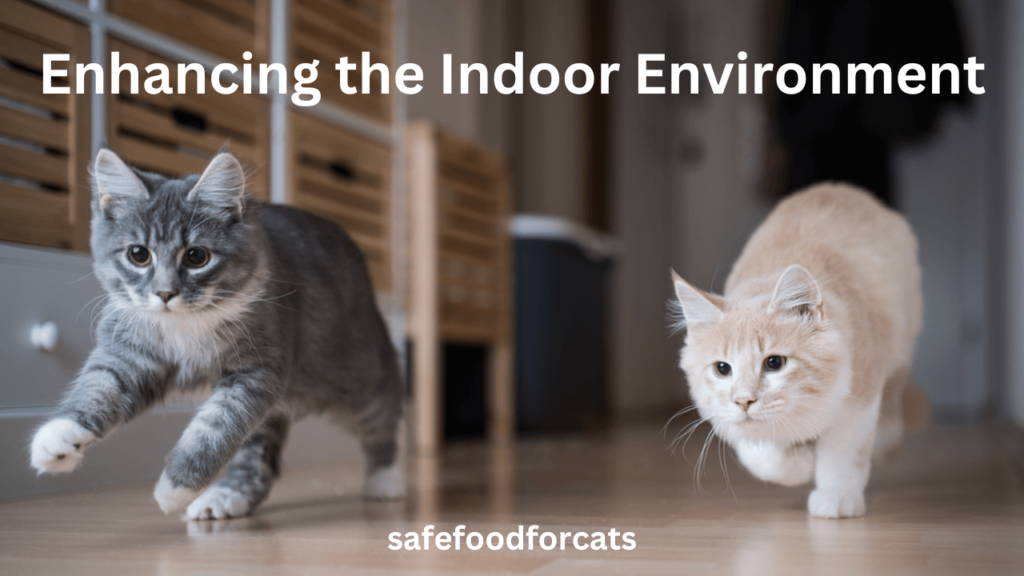
Best Practices for Cat-Zinnia Coexistence
To ensure a harmonious coexistence between your cats and zinnias, here are some best practices to follow:
Regular Vet Check-Ups
Regular veterinary check-ups are crucial for monitoring your cat’s health and well-being. Routine examinations can help identify any potential issues or allergies early on. Consult your veterinarian about the specific needs and potential risks associated with zinnias for your individual cats, as every cat is unique.
Observation and Supervision
Keep a close eye on your cats’ behavior around zinnias, both indoors and outdoors. Spend time observing their interactions and intervene if necessary to prevent any mishaps. By being observant and proactive, you can ensure a safe environment for your cats and the zinnias they encounter.
Balanced Diet and Nutrition
Providing your cats with a balanced and nutritious diet is essential for their overall health. While zinnias can offer some nutritional benefits, they should not replace a well-rounded cat food diet. Consult your veterinarian to ensure that your cats’ nutritional needs are met and that any supplements or additions, such as zinnias, are offered in moderation.
Conclusion
In conclusion, zinnias can be a safe and enjoyable addition to your cat-friendly garden or indoor space. By selecting non-toxic varieties, providing a safe environment, and closely monitoring your cats’ interactions, you can confidently incorporate zinnias into your cat’s surroundings. Remember to consult your veterinarian for specific advice tailored to your cats’ needs and ensure a balanced approach to their diet and overall well-being. With proper precautions and care, you and your feline friends can delight in the beauty and benefits of zinnias together.

